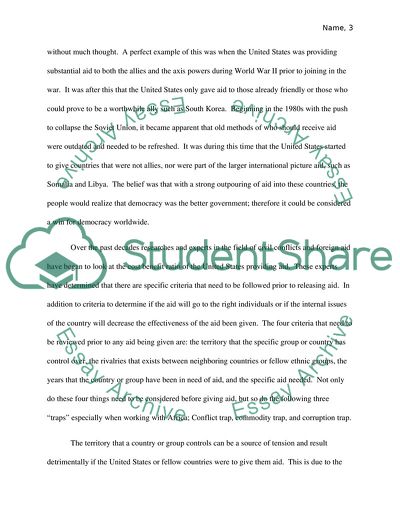Cite this document
(Foreign Aid - Effect on Civil Conflict Case Study Example | Topics and Well Written Essays - 2000 words, n.d.)
Foreign Aid - Effect on Civil Conflict Case Study Example | Topics and Well Written Essays - 2000 words. https://studentshare.org/social-science/1768124-does-us-foreign-aid-affect-civil-conflict
Foreign Aid - Effect on Civil Conflict Case Study Example | Topics and Well Written Essays - 2000 words. https://studentshare.org/social-science/1768124-does-us-foreign-aid-affect-civil-conflict
(Foreign Aid - Effect on Civil Conflict Case Study Example | Topics and Well Written Essays - 2000 Words)
Foreign Aid - Effect on Civil Conflict Case Study Example | Topics and Well Written Essays - 2000 Words. https://studentshare.org/social-science/1768124-does-us-foreign-aid-affect-civil-conflict.
Foreign Aid - Effect on Civil Conflict Case Study Example | Topics and Well Written Essays - 2000 Words. https://studentshare.org/social-science/1768124-does-us-foreign-aid-affect-civil-conflict.
“Foreign Aid - Effect on Civil Conflict Case Study Example | Topics and Well Written Essays - 2000 Words”. https://studentshare.org/social-science/1768124-does-us-foreign-aid-affect-civil-conflict.


